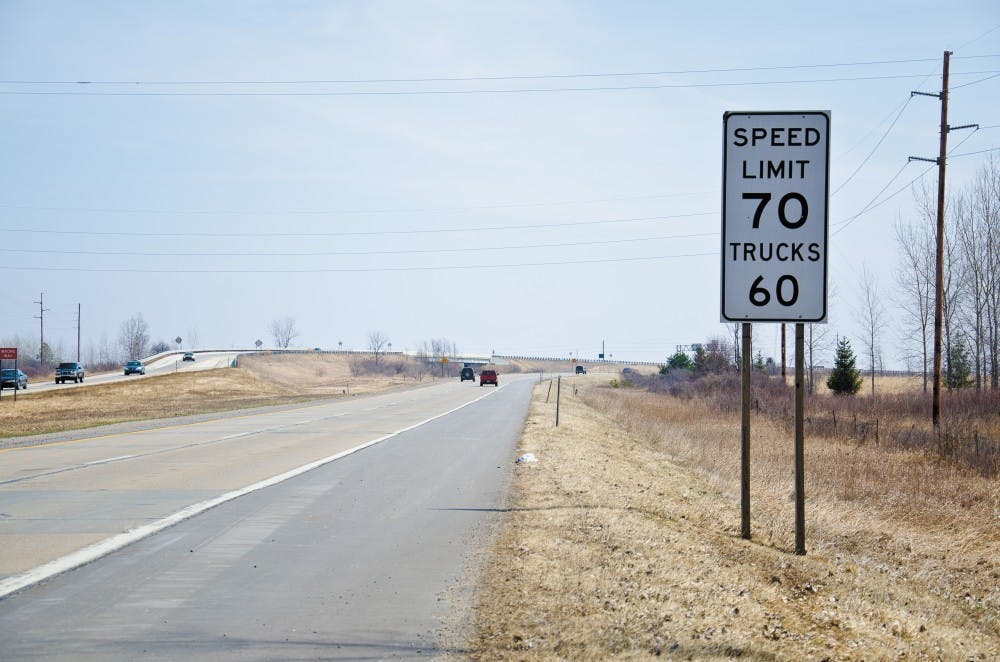Bill could increase speed limits on rural freeways

New legislation in Lansing has Michigan poised to join Idaho, Utah and Wyoming as states that have a speed limit of 80 mph in certain areas.
A five-bill package introduced by State Rep. Brad Jacobson, R-Oxford, and three other representatives would give the Michigan Department of Transportation and Michigan State Police the authority to set higher speed limits based on studies of traffic flow.
House Bill 5964 would update speed laws to reflect the speed at which 85 percent of motorists are already safely driving at. MDOT and MSP would be able to designate "rural limited access freeways," which would have a speed limit of 80 mph. The bill calls for all rural freeways to be designated within one year of it being passed.
Wayland senior Jennifer Josey said she has reservations about raising the speed limit to 80 mph.
"Frankly, I think it's stupid," Josey said. "If you raise the speed limit to 80, people will go 90. It's a never ending cycle."
Josey also said other safety concerns are worsened by traveling at higher speeds.
"There's a lot of wildlife on rural Michigan freeways," Josey said. "What if you run into a deer going 80 or 90?"
Points on drivers' licenses for tickets of 5 miles per hour or less would be eliminated through the bill as well.
Jacobsen used a length of highway US-127 between Jackson and Lansing, portions of I-75 north of Bay City and I-69 between Lansing and Port Huron as examples of possible rural access freeways.
Fenton freshman Megan Caruso said raising the speed limit makes sense for people using US-127.
"Last semester I got a ticket for going 80 on 127," Caruso said. "Everybody around me was going 80 too. They should raise the speed limit because it would mean less tickets for students going home or coming back."
Studies by MSP have shown that changing the posted speed limit does not significantly increase the speed at which 85 percent of motorists are driving. The driving environment is a significant factor which influences the prevailing speed. Findings show that a driver's risk of being involved in a crash is lowest at 5 to 10 mph above the average speed of traffic. This is coincidentally usually the 85th percentile speed. Based on those studies, the lowest risk of being involved in a crash occurs at approximately the 85th percentile speed.
In addition to raising the speed limit to 80 mph in certain areas, the package will reform school zone traffic laws by implementing a reduced speed limit 30 minutes before and after the school day. Current laws require motorists to observe a 35 mph school zone speed limit a full hour before and after the school day.
The package was referred to the House Transportation and Infrastructure Committee.



